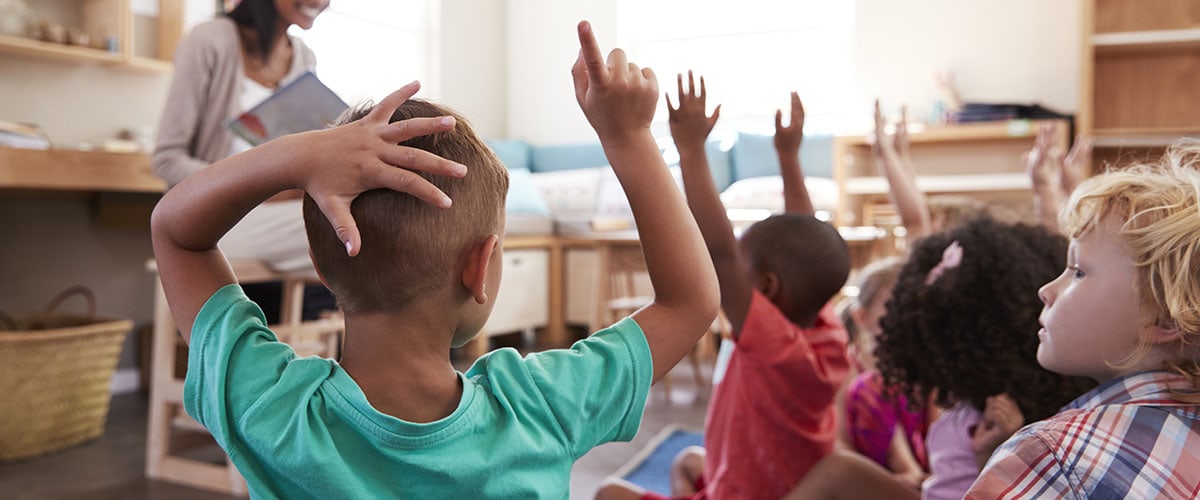Smaller classes just sound better—but are they, really?
In Canada, class size has been top of mind the past few years with heated debates over class-size legislation in Ontario, BC, Alberta, and Manitoba.
Plenty of studies point to advantages for kids in smaller classes, but a lot of them aren’t super-scientific or they focus heavily on financial cost-benefit analysis. As a parent, I’m less interested in short-term costs than in long-term benefits for my kids. Will it help them enjoy learning, feel safe and supported, become confident and curious? Will they be happy? Studies are not as good at measuring these things.
But here’s what we do know about the effects of small class sizes.
Younger children benefit most from smaller classes.
After more than 30 years’ of research, this is pretty much undisputed. In the early years, kindergarten through Grade 3, kids in smaller classes have significant advantages—not just immediately, but into adulthood. They do better in math and language, they are more likely to go to university, and as adults, they earn more, save more, and live in better neighbourhoods.
The earlier a child is placed in a small class, the better. Students who start kindergarten in a small class do much better in reading and math over time than children who start a small class in Grade 1. The benefits appear to compound, too — meaning the more years students spend in a small class, the larger the achievement gap.
Older children probably benefit, too.
There is less data out there on the effects of small classes on children beyond Grade 3 and some studies have found no benefits at the high school level. But a study from Sweden found that students ages 10–13 in smaller classes were more motivated, had more self-confidence, were more likely to finish university, and earned more.
Kids are more engaged in smaller classes.
Students in smaller classes talk and participate more, have better relationships with their teachers, have fewer behaviour issues in class, and are better able to adapt to challenges. All this is well-documented for younger kids.
Teachers can focus more on individuals in a small class.
Obviously, right? A teacher with fewer students can give each student more attention. That also means they can shape lessons in response to individual learning needs and are better at recognizing whether each student is participating and on track.
Teachers are happier with small classes.
Statistics aside, teachers like small classes. They’ve said it loud and clear: they are struggling with large classes. Small classes are less chaotic and easier to manage. Making teachers happy is important. Quality teachers are less likely to leave their school when they are happy. And all teachers can do a better job when they aren’t completely burned out. I care about teachers’ well-being, but more selfishly, I care about my kid not being in a class with a frazzled, overwhelmed teacher.
Kids are (probably) happier in small classes.
In class-size studies, this point is sometimes mentioned as an aside—as in, “sure, kids might be happier, but how are their test scores?” There’s no hard evidence that kids are happier in small classes, but education experts often suggest it’s true. We don’t really know, though, because no one is digging into it. I wish they would. It stands to reason that happier kids will have more positive associations with school and with learning, which seems fairly important for hitting more marketable benchmarks like higher test scores and lower drop-out rates.
***
So, are smaller classes better? For some kids, yes. For most kids? Maybe. There are a bunch of unknowns. For instance, if teachers had better institutional support, training, and pay, could they handle larger classes? It seems to work in Japan, where outcomes are much higher for students across the board, despite an average class size of 31 to Canada’s 26.
What about the effects of parental involvement? What class composition and support for kids with unique learning needs? You see what I mean. It’s complicated.
At the very least, small classes do seem to be good for younger kids, and for teachers. If I had my way, my kids (both in primary grades) would be in small classes. Though I admit, maybe I still just like the sound of it.
Have an opinion on class size? Please share it in the comments.




